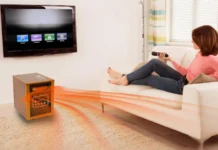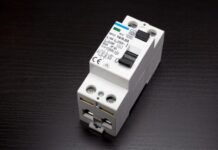Do you need information on how to strip wire? Then, read through this article on “How To Strip Wire” for a guide.
This article contains instructions on how to strip a wire and the basic information you might require on electrical wire. Also, it contains the best wire strippers that can serve you best if you need one.
For clarity, this article is presented in sections with an overview at the beginning. Then, you will have details on how current flows through a wire in the next section.
Subsequently, the next section will contain the factors you need to consider while stripping a wire.
Furthermore, I will give you the procedures you need to follow to strip a wire correctly. Here, you will find wire strippers, utility knives, and scissors that serve you best.
In conclusion, you will get answers to some frequently asked questions on how to strip wires. My final thoughts will follow this.
How To Strip Wire: Overview
After generating electricity, it would be useless if it did not travel to the consumers. Thus, it is very necessary to transport electricity safely from the point of generation to the consumers.
A wire is a material made of a conductor and an insulator that transports electricity from one point to another. Also, a wire provides a path for electric current to flow through safely.
However, the conducting part of an electrical wire is metal, made from either copper, aluminum, or steel. Also, the insulating part could be a product of polyvinyl chloride (PVC) or cross-linked polyethylene (XLPE).
The term that describes two or more wires sheathed together is cable. Some cables have various layers for protection and proper insulation according to their areas of application.
The act of stripping a wire is the process of removing the insulation on the wire to expose the conducting part of the wire. This is necessary when you want to join two or more wires or terminate a wire at a certain point in your electrical circuit.
Current can only flow through the conducting part of a wire. This conducting part could be a solid core or a stranded core.
A solid core wire has just a single core that can carry a sizeable current. Whereas a stranded core wire has little strands of wire twisted together to make up the conducting part of the wire.
Stripping a wire is a basic skill every electrician should know.
Even so, anyone who intends to carry out basic electrical repairs should be able to strip a wire easily, precisely, and quickly, as it determines the overall quality and safety of your electrical project.
Having known what wire stripping is, let’s discuss how current flows through a wire.
How Do Current Flows Through A wire
An electrical current only passes through conducting materials like metals. Particularly, this current flows due to the potential difference across the ends of the conductor.
You could now be curious to know why a wire has an insulator when insulators do not allow current to pass through them.
However, the insulating part of a wire plays a unique role in ensuring that the current does not leak to other metal parts of any electrical installation, like line supports.
Also, the insulation prevents electrocution if you mistakenly touch the wire while an electric current is flowing through it. I will discuss this later.
Electricity is the continuous flow of electrons through a conductor. This electricity flows from a source like batteries, generators, etc.
However, electricity can either be direct current (DC) electricity or alternating current (AC) electricity.
Direct current electricity flows in a specific direction. In other words, it is unidirectional, and you can derive it from sources like batteries, rectifiers, solar panels, etc.
On the other hand, the alternating current reverses its direction periodically. Therefore, you can derive alternating currents from sources like generators, inverters, etc.
Every source of electricity always has two terminals, the positive terminal and the negative terminal (for AC, live and neutral terminals).
Electrons flow from the positive (live) terminal through the wire to the load and return to the source’s negative (neutral) terminal.
In bare conductors, air serves as their insulator. Therefore, the current that passes through conductors is of different sizes, and wires are of different sizes.
This is because every electrical load has a current rating, and this is the current the load is expected to operate with.
Hence, the size of wire you should use with this load must be able to carry the current that flows through it.
Factors To Consider When Stripping A Wire
When stripping a wire, these are some of the factors you should consider:
Nature Of Strip
Stripping a wire mostly involves exposing the core of a part of the wire for jointing or terminating the wire. However, some electrical operations need an electrician to peel off the entire insulation.
If you intend to strip a few inches of the wire for jointing or termination, a simple wire stripper will do. Even so, if you need to peel off the entire insulation of a long wire, you need a stripping machine.
Generally, stripping machines are not used in basic electrical operations. Hence, you might not need it for do-it-yourself projects.
Wire stripping machines are applicable only for industrial uses. Click here for details on wire stripping machines.
Tool To Be Used
The wire stripper is the most suitable tool to use in stripping a few inches of wire. However, in the absence of a wire stripper, you can use a pair of scissors or a utility knife.
If you are using a wire stripper, the job will be easier, more accurate, and neat. However, you need to be careful not to ruin the core of the wire, especially a stranded core wire, when you use a pair of scissors or a utility knife to strip the wire.
Type Of Core
A wire’s conducting part could be either a solid core or a stranded core. Stranded core wires are easier to strip.
Particularly, when a wire stripper is unavailable, and you intend to strip a wire, you might have less error doing that for a solid core wire.
However, it could be different for stranded core wires. Some stranded core wires have very tiny strands that could easily break while stripping their insulation, even with wire strippers.
If, in the process of stripping a wire, you mistakenly cut some strands of the core, it will reduce the conductivity of the wire. If such a situation occurs, cut the wire and strip it again.
Wire Gauge/Size
The wire gauge or size describes the cross-sectional area of the conducting part of the wire. For example, while stripping a wire, you need to consider the gauge of the wire.
This will aid you in using your stripper effectively. In other words, you need to fit your wire into the right gauge for proper stripping.
Thickness Of The Insulation
When electric current flows through a conductor, it creates an electromagnetic field around the conductor.
For example, the core of a wire is a conductor, and it is expected to create a magnetic field when current passes through it.
However, the electric field around a conductor reduces with the thickness of the insulation. Thus, if the current flowing through the conducting part of a wire is much, its thickness will be high to reduce the magnetic field.
Therefore, when stripping a wire, you need to consider the thickness of its insulation.
Length You Intend To Strip
The longer the inches you intend to strip on your wire, the more force you will need to pull off the insulation.
However, there are models of wire strippers that do not require you to pull off the insulation. Instead, just pull the handle, and the stripper will do the rest of the work.
Depending on the nature of the joint or termination you intend to make, you might need to strip the wire twice to reduce the force or energy you need to pull off the insulation.
How To Strip Wire: Procedures
There are three ways to strip wire. Apart from using the wire stripper, you can strip a wire with a pair of scissors or a utility knife.
Stripping Wire With A Wire Stripper
A wire stripper is a simple hand tool that is used to peel off a few inches of insulation from a wire. It is capable of removing the protective coating at the end portions of an electric wire to connect them to other wires or terminals.
Wire strippers can either be manual or automatic.
The manual wire stripper is highly versatile to use. You need to manually rotate it while applying pressure to cut through the insulation and adjust the wires.
On the other hand, an automatic wire stripper is easier to use and does the job faster. You need to hold one side tight, and the other side simultaneously does the cut and removes the insulation.
However, the automatic wire stripper only works for certain size ranges of wire. Large wires may not fit into the jaw and could break small wires.
Generally, below are the steps to use a wire stripper to strip wire.
Step 1
The first thing you should do is to identify the gauge of the wire you intend to strip. You do this by comparing it with the guide along the side of the wire stripper.
For some models of wire strippers, you do not need to identify the gauge, as the stripper will automatically do that for you.
Step 2
After identifying the gauge of the wire, place the tip of the wire according to the length you want to strip into the jaws of the wire stripper. Then, notch it in the appropriate space for the wire’s gauge.
Step 3
Then, close the wire stripper around the wire to cut through its insulating part. Next, pull the sheathing (insulating part) off the end of the wire with the jaws of the wire stripper still closed.
This will give you a smooth, accurate, and precise cut.
However, you might not need to go through the stress of pulling the sheathing of the wire in some models of wire strippers. All you need to do is close the handle of the wire stripper, and it will cut and pull off the insulation by itself.
Therefore, if you intend to get a wire stripper that will serve you best, do not hesitate to choose from the ones listed in the table below. Then, click on the product to place your order from Amazon.
Striping Wire Without A Wire Stripper
If you do not have a wire stripper to strip your wire, do not despair. There are other ways you can strip your wire.
However, you can either use a pair of scissors or a utility knife for the job.
Stripping Wire With A Utility Knife
To strip a wire with a utility knife, the first thing you should do is lay the wire on a workbench or piece of wood.
Hold the utility knife in one hand so that its blade rests on the sheathing of the wire at the point you want to cut to strip it off. With your other hand, roll the wire across the work surface for the blade to score the sheathing around the wire.
Drop the utility knife and pull off the sheathing with your fingers. Then, inspect the wire to ensure that the conductor beneath it is not damaged.
Click here to order a utility knife from Amazon.
Stripping Wire With A Pair Of Scissors
You can also strip your wire with a pair of scissors. This pair of scissors is suitable for electrical work and is heavier than the one used to cut through clothes.
First, open your scissors and place your wire where the blades meet as close as possible. Then, close the scissors to bite into the sheathing with just the slightest pressure not to cut through the wire.
With the fingers of your other hand, twist the wire around within the open scissors to completely score the sheathing. After separating the sheathings with the blade, pull it off.
Click here to purchase a suitable pair of scissors for your electrical work.
My Recommendations: The 5 Best Wire Strippers
| Product | Weight | Dimension | Wire Guage | Stripper Type | Brand |
| IRWIN Vise-Grip Wire Stripping Tool / Wire Cutter | 3.04 Ounces | 10.1 x 3.9 x 0.8 inches | 10 to 22 AWG | Manual | IRWIN |
| WGGE WG-015 Professional 8-inch Wire Stripper/Wire crimping tool | 7.8 Ounces | 9.84 x 5.91 x 1.97 inches | 10 to 22 AWG | Manual | WGGE |
| Klein Tools 11055 Wire Cutter and Wire Stripper | 5.4 Ounces | 9.13 x 5 x 0.63 inches | 10 to 20 AWG | Manual | Klein Tools |
| Know easy Automatic Wire Stripper and Cutter | 0.01 Ounces | 10 x 0.9 x 4.2 inches | 7 to 32 AWG | Automatic | Know easy |
| MulWark 8″ Heavy Duty Multi-Purpose Electrical Wire Stripping Tool | 2.4 Ounces | 10.1 x 4 x 0.6 inches | 10 to 22 AWG | Manual | MULWARK |
How To Strip Wire: Frequently Asked Questions
The ideal tool to strip wire is a wire stripper. However, you can use a utility knife or a pair of scissors if you do not have a wire stripper.
No.
Do not attempt to use a plier to strip a wire. This is because the cutting jaws of the plier can create a scoreline around the core of the wire. Thus, this will create a weak point where the wire can snap off.
To ensure the safety, durability, and continuity of current flow when joining two cables or terminating a cable.
A stripping tool, or stripper, is a portable handheld device used by electricians to remove the insulation of an electric wire.
About 1 to 0.5 inches, depending on what you want to do.
Stripping means removing clothing, covering, or surface matter.
If you strip too much wire and leave the conductor exposed, it could lead to current leakage and electrocution.
Particularly, strip away 0.5 to 0.75 inches of insulation from the end of each insulated wire in the box with the aid of a wire stripper.
The hot wire (red, black, or blue).
The neutral wire (white).
The ground wire (green or bare copper).
Yes.
A thicker wire has less resistance. Hence, it conducts more electricity.
How To Strip Wire: My Final Thoughts
To ensure continuity of the flow of electric current in a circuit when joining two or more wires, there is a need for stripping wires.
Also, terminating a wire in an electric circuit needs the wire to be stripped to expose the conducting part.
In addition, stripping a wire is very simple when you use the right tool. Generally, the ideal tool you need to strip a wire is a wire stripper.
However, you can use a utility knife or a pair of scissors to strip a wire if you do not have a wire stripper.
Nevertheless, try now to score through the conducting part of the wire while stripping the insulation.
I hope you found this article helpful.
Therefore, fill out the “Leave A Reply” form to share your thoughts.
You might be interested in reading more articles like this one. Please visit the following pages:




